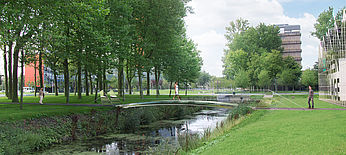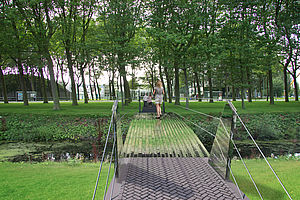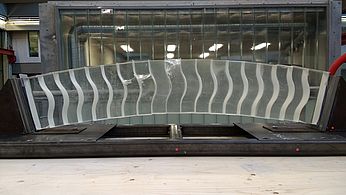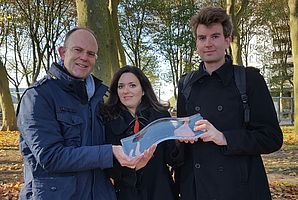Glass Masonry Bridge
A bridge is a good way to demonstrate this material’s loadbearing capacity and safety. It is sustainable (made from sand, infinitely recyclable) and durable (does not corrode, rust or rot). However, people do not yet trust in the strength of glass.
A site has been assigned for the structure (The Green Village on the TU Delft campus) and the design is almost finished. However, further research and detailing is required for the proposed dry assembly construction method. Mock-ups will be produced and experimentally tested. Structural analyses will be performed and finally the bridge itself will be constructed in a collaborative effort between the Glass and Transparency group at CEG and the newly established Design of Infrastructures group within the Faculty of Architecture and the Built Environment.

The visible result will be a glass bridge with a span of 14 metres which can be fully recycled, moved or modified since all components are mechanically joined (dry assembly).

The psychological result of creating an infrastructural object made of glass that people can walk or cycle on will be a more common acceptance of glass as a loadbearing material.

The projectgroup:
Prof. Rob Nijsse (projectleader)
Joris Smits (contact)
Ate Snijder
Telesilla Bristogianni

